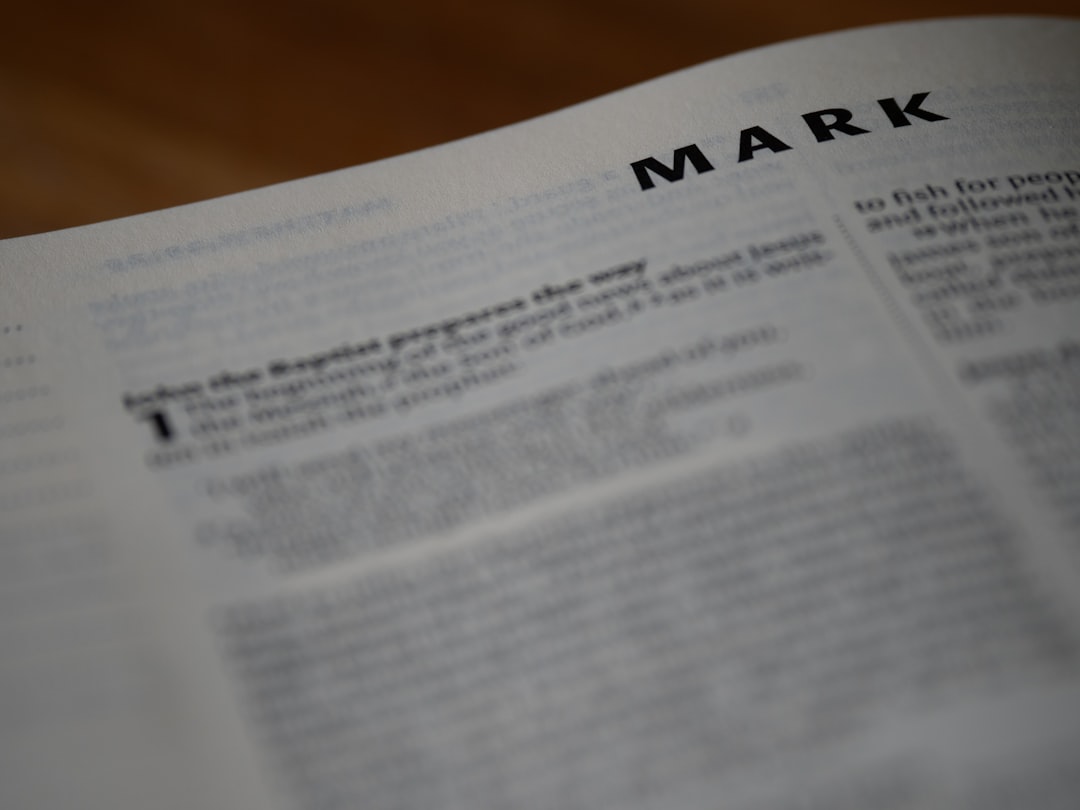Trademark Protection: Registration and Analysis Under Scrutiny 2025
Trademark Protection: Registration and Analysis Under Scrutiny 2025 - Registration System Strains Under Record Volume
As of May 2025, the relentless pressure on the trademark registration system, buckling under sustained high application volume, is moving beyond mere operational difficulties. It's now sharpening the focus on the fundamental capacity and integrity of the entire framework. This current state forces a critical assessment of whether the system can truly maintain the necessary standards and prevent errors or oversights when facing such unprecedented demand, underscoring the immediate need for serious analysis and potential changes to secure effective intellectual property protection going forward.
From a processing and data standpoint, the sheer volume pressing on global trademark systems reveals some fascinating and unexpected dimensions.
The computational effort now dedicated purely to analyzing the ever-growing flood of new trademark applications for potential conflicts appears to consume resources on a scale previously associated with large-scale scientific simulations, far exceeding what one might intuitively expect for legal filings.
Scrutiny of filing patterns indicates a significant portion of the current volume is driven by purely speculative or preemptive filings, where entities are seemingly claiming ground for brands with no clear current or near-term intent to utilize them, thereby diverting system capacity needed for genuine commercial activity.
The recent acceleration in registration requests shows a pronounced spike stemming from attempts to protect assets, identities, and concepts specifically within virtual and emerging digital environments, underscoring how quickly intellectual property challenges are manifesting outside traditional physical commerce.
While automated tools are increasingly deployed, evaluations around inherent registrability or the likelihood of a mark successfully clearing objections and being maintained still require substantial human judgment; machine learning models, though improving, continue to exhibit a notable margin of uncertainty in predicting these complex outcomes.
Considering the entire lifecycle – from initial processing and data storage to long-term maintenance of vast digital registers globally – the cumulative energy footprint associated with managing trademark data registers now represents a considerable environmental overhead, warranting further examination alongside other data-intensive industries.
Trademark Protection: Registration and Analysis Under Scrutiny 2025 - Non-Traditional Marks Draw Sharper Focus
As the field of trademark rights shifts, heightened attention is being paid to marks that don't fit the usual mold. Think about elements like particular colors, sounds, smells, or even moving images and three-dimensional shapes – these fall into the category of non-traditional identifiers. Protecting these abstract or less tangible brand signals raises complex questions about how the system works, especially since they don't fit neatly into the boxes built for words or logos. The sheer volume of applications flowing through the system doesn't just create backlogs; it forces a closer look at whether the established rules are truly equipped to handle the unique challenges these newer types of marks present. Doubts are emerging about whether current standards can reliably assess and protect these distinct brand aspects. This ongoing difficulty in pinning down and securing rights for these innovative forms highlights a clear friction between evolving commercial identity and the more fixed nature of legal principles, suggesting a need for a serious re-evaluation of how intellectual property is handled in this expanding space. Parties grappling with these emerging issues face significant implications for how brands are recognized and compete.
The examination of marks extending beyond traditional visual signs appears to be demanding increasingly intricate technical approaches.
For sensory aspects like scent, efforts to analyze them objectively for registration are reportedly moving into detailed chemical profiling, attempting to map olfactive sensations to molecular structures using methods like gas chromatography. The premise seems to be establishing a chemical 'fingerprint' for consistency, although how this data definitively correlates to consumer perception and distinctiveness in the market remains a complex translation.
Holographic elements, particularly as they might be encountered in evolving digital environments, are requiring analysis via sophisticated optical technologies. This effort feels less about identifying the source of conventional physical goods and more about authenticating a specific visual effect within a virtual space, which seems to blur the lines of traditional trademark function.
Evaluating motion sequences proposed as trademarks involves delving into kinematic analysis, attempting to quantify movement patterns beyond simple descriptive text or static images. Applying techniques borrowed from fields studying biomechanics to define distinctiveness raises questions about whether the 'mark' is the underlying mathematical description of motion or the perceived visual experience by an observer.
Sound marks, long challenging to register, are now facing assessment methods incorporating elements of psychoacoustics and attempts to model human auditory perception based on detailed spectrographic data. The aim is to ensure 'perceptual distinctiveness,' but accurately modeling how varied consumers process and remember a specific sound as a brand indicator based purely on waveform analysis feels like a significant leap.
Even proposed tactile marks, involving specific textures, are apparently being subjected to analysis using haptic feedback interfaces and perhaps AI pattern recognition. While this provides objective data on texture attributes, translating that physical data into a reliable measure of source identification and distinctiveness in the hands of a consumer presents another fascinating layer of analytical complexity.
Overall, the drive to apply precise scientific and engineering methods to these inherently subjective or ephemeral sensory inputs for the purpose of trademark registration introduces considerable analytical overhead. It seems intended to reduce ambiguity, but the process of transforming perception or sensation into registrable data raises intriguing questions about whether the technical analysis truly captures what makes something function as a mark in the marketplace, or if it just adds layers of intricate, potentially debatable, data points to the registration process.
Trademark Protection: Registration and Analysis Under Scrutiny 2025 - Virtual Goods Protection Remains Fluid
As of May 2025, the security of brand identity in digital and immersive online spaces continues to be an uncertain area. With increasing activity involving virtual items, like digital collectibles or non-fungible tokens, intellectual property offices are seeing a definite rise in applications trying to cover these novel assets. This activity, however, highlights a significant puzzle: how well do the established rules, designed primarily for physical goods and conventional services, truly apply to these digital equivalents? Simply filing applications for virtual goods doesn't automatically resolve the core tension between traditional protection models and the rapidly evolving nature of digital environments. The differences between a tangible product and its virtual counterpart are prompting complex legal discussions and challenges regarding enforcement. Attempts to extend rights originally intended for the physical world into this new digital frontier are proving far from straightforward, requiring constant reassessment of what effective protection even means in a realm where reality and virtuality are increasingly interwoven. This continuous need to adapt and interpret existing law underscores the significant uncertainty and rapid changes defining virtual goods protection today.
The legal contours surrounding digital goods and services within virtual environments remain remarkably ill-defined and inconsistent across jurisdictions, which inherently complicates any attempt at uniform protection and enforcement for entities operating globally. From a systems viewpoint, this lack of a stable, shared data schema for 'virtual goods' hinders robust cross-border legal interoperability. Evaluating intellectual property disputes in this domain often necessitates technical dives into digital provenance verification methods, potentially requiring an understanding of distributed ledger technology or analysis of digital asset metadata – moving beyond traditional legal evidence gathering towards digital forensics and cryptographic assessment. The emergence of assets generated by algorithms or artificial intelligence injects further complexity, challenging existing legal frameworks built around human originality and authorship, concepts central to trademark distinctiveness and rights. Assigning a quantifiable value for infringement damages presents another significant hurdle; courts are seemingly grappling with methodologies to price purely intangible assets, considering factors like digital scarcity, functional utility within the virtual space, or even community social value, which feels more akin to modeling ecosystem economics than applying standard valuation principles. We're also observing instances of established real-world brand owners attempting to assert claims over virtual assets or spaces bearing similar names within the metaverse, even without prior explicit trademark registration covering these specific virtual contexts – a dynamic that mirrors aspects of "reverse domain name hijacking" and exposes a potential lag between offline brand recognition and explicitly secured online rights. This overall picture suggests a legal framework still playing catch-up with technological and social shifts in digital interaction.
Trademark Protection: Registration and Analysis Under Scrutiny 2025 - Key Court Decisions Refine Trademark Scope
In recent times, rulings from courts have been key players in defining precisely where trademark rights begin and end. Judges are actively examining how traditional legal tests apply to newer forms of branding, like unusual sounds or textures, and are often demanding clear evidence that the public actually sees these as indicators of source, not just decorative elements. Similarly, courts are grappling with the concept of trademarks for digital assets that only exist online, attempting to translate established rules for physical products into this virtual space, which proves quite challenging and sometimes results in inconsistent outcomes. These judicial pronouncements underscore that simply pushing boundaries with new mark types or into new environments doesn't guarantee protection; the courts are clearly requiring proof that the mark genuinely functions as a brand identifier in the consumer's mind within its relevant context. This ongoing process highlights the sometimes cautious approach the legal system takes in adapting to rapid shifts in how brands operate.
Recent judicial reviews across various jurisdictions are beginning to impose more stringent analytical frameworks on how trademark rights are defined and enforced, moving away from some long-standing presumptions.
One observed shift is a recalibration of how far trademark protection extends to related items. Courts seem less willing to simply infer a relationship between a trademarked product and another based on superficial similarities or shared distribution channels. They are increasingly demanding empirical evidence demonstrating a tangible likelihood of market confusion or demonstrable competitive overlap, suggesting a move towards grounding these extensions in actual market dynamics rather than theoretical proximity.
Furthermore, assessing what a trademark actually signifies in the marketplace appears to be leaning heavily on interpreting aggregate consumer behavior data. Instead of solely relying on the brand owner's intended meaning or typical legal analyses, court evaluations are incorporating signals from how the public interacts with the mark online—like how it appears in search engine results or discussions in user-generated content—to gauge its functional meaning and associative strength from the outside looking in.
The threshold for demonstrating active use of a trademark to maintain its validity is also undergoing scrutiny. Mere theoretical availability or passive presence seems less convincing. Decisions are signaling a requirement for clearer evidence of intent and measurable steps taken towards actively leveraging the mark to engage with consumers, including in nascent or specialized online and virtual contexts, implying a need for auditable market engagement.
Cases dealing with dilution, where a strong mark's distinctiveness might be weakened by unauthorized use, are encountering a higher standard of proof. The requirement to show not just potential harm but a demonstrated weakening effect—that the secondary use has observably degraded the singular connection between the famous mark and its source in the public mind—demands more rigorous substantiation of impact than in previous periods.
Finally, the fundamental territorial nature of trademark law continues to be emphasized, even as digital presence transcends physical borders. Recent judgments underscore the difficulty of asserting trademark rights effectively in areas where the mark lacks significant local market recognition or established commercial footprint, reinforcing the principle that widespread digital visibility doesn't automatically translate into enforceable intellectual property rights everywhere.
More Posts from aitrademarkreview.com:
- →Nike's Just Do It Slogan A Trademark Analysis of Its Enduring Impact on Advertising
- →PepsiCo's Sierra Mist Trademark A Timeline of Rebranding and Legal Challenges
- →Taylor Swift's Female Rage The Musical Trademark Expanding Her Empire Beyond Music in 2024
- →Barbie's Legal Legacy Landmark Trademark Cases Shaping Brand Protection
- →Swifties' Impact on Music Copyright How Taylor Swift Fans Influence Intellectual Property Discussions
- →Navigating Competitor Trademark Harm in New Jersey: Strategies for Response

